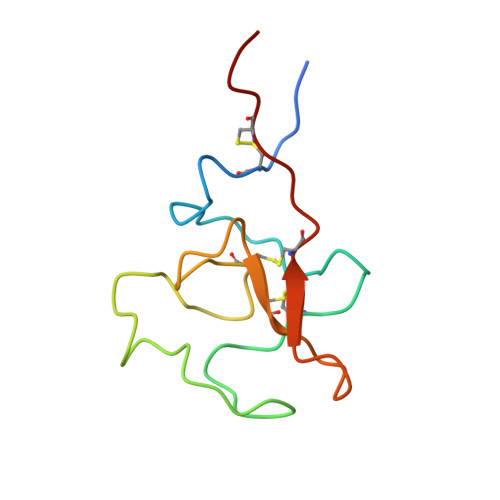Discovery of potent small-molecule inhibitors of lipoprotein(a) formation.
Diaz, N., Perez, C., Escribano, A.M., Sanz, G., Priego, J., Lafuente, C., Barberis, M., Calle, L., Espinosa, J.F., Priest, B.T., Zhang, H.Y., Nosie, A.K., Haas, J.V., Cannady, E., Borel, A., Schultze, A.E., Sauder, J.M., Hendle, J., Weichert, K., Nicholls, S.J., Michael, L.F.(2024) Nature 629: 945-950
- PubMed: 38720069
- DOI: https://doi.org/10.1038/s41586-024-07387-z
- Primary Citation of Related Structures:
8TCE, 8V8Z, 8V9B - PubMed Abstract:
Lipoprotein(a) (Lp(a)), an independent, causal cardiovascular risk factor, is a lipoprotein particle that is formed by the interaction of a low-density lipoprotein (LDL) particle and apolipoprotein(a) (apo(a)) 1,2 . Apo(a) first binds to lysine residues of apolipoprotein B-100 (apoB-100) on LDL through the Kringle IV (K IV ) 7 and 8 domains, before a disulfide bond forms between apo(a) and apoB-100 to create Lp(a) (refs. 3-7 ). Here we show that the first step of Lp(a) formation can be inhibited through small-molecule interactions with apo(a) K IV 7-8. We identify compounds that bind to apo(a) K IV 7-8, and, through chemical optimization and further application of multivalency, we create compounds with subnanomolar potency that inhibit the formation of Lp(a). Oral doses of prototype compounds and a potent, multivalent disruptor, LY3473329 (muvalaplin), reduced the levels of Lp(a) in transgenic mice and in cynomolgus monkeys. Although multivalent molecules bind to the Kringle domains of rat plasminogen and reduce plasmin activity, species-selective differences in plasminogen sequences suggest that inhibitor molecules will reduce the levels of Lp(a), but not those of plasminogen, in humans. These data support the clinical development of LY3473329-which is already in phase 2 studies-as a potent and specific orally administered agent for reducing the levels of Lp(a).
Organizational Affiliation:
Lilly Research Laboratories, Alcobendas, Spain.















